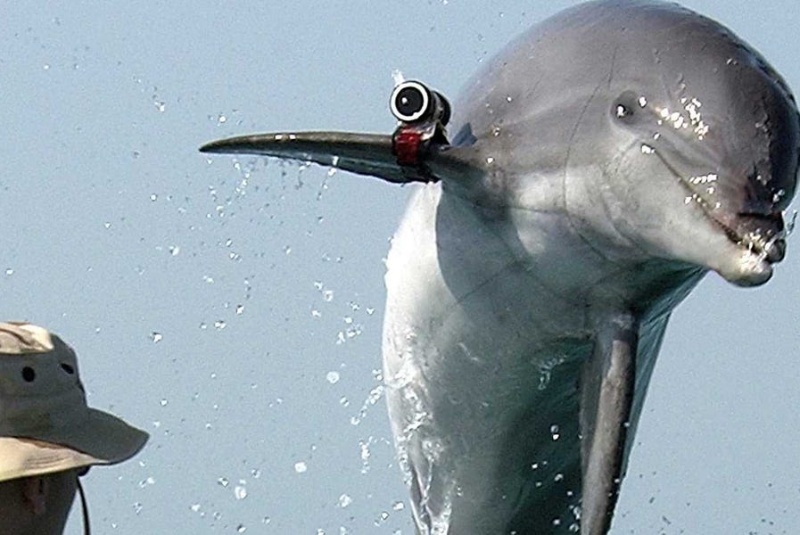Naval Base Kitsap, a jewel in the crown of U.S. naval installations, rests within the embrace of the Pacific Northwest's lush landscapes. Its verdant surroundings belie the gravity of its purpose: it is the heart of the United States' Trident submarine-launched ballistic missile system and a cornerstone of the nation's sea-based nuclear deterrent. The presence of these strategic assets underscores the importance of robust and reliable security—a task uniquely shared between human vigilance and the astonishing capabilities of marine mammals.

The Strategic Import of Naval Base Kitsap
The significance of Naval Base Kitsap can be traced back to the consolidation with the Bangor submarine base, creating an unparalleled naval warhead repository. This facility is not just a repository but a bastion that houses eight Ohio-class submarines. These "boomers" are a testament to the ingenuity and forward-thinking strategies of naval warfare, designed with the stealth and capability to provide a reliable second strike in the event of a nuclear altercation. Each submarine is a carrier of Trident II D-5 ballistic missiles, potent instruments of war that can be outfitted with multiple nuclear warheads. The base's strategic location near Seattle not only places it within the economic and cultural sphere of the city but also manifests a stark dichotomy—the lively urban fabric on one hand and the sobering reality of destructive potential within arm's reach on the other.
A Quarter of the Nation’s Nukes
The arsenal at Kitsap represents a substantial portion of the nation's nuclear might. This pivotal role in American defense strategy is reflected in the ever-present debates and dialogues surrounding disarmament and arms control. Yet, while the global community pursues the reduction of the nuclear stockpile, the exact details of Kitsap's arsenal remain a tightly guarded secret, a matter known only to an elite few within the military echelons.
The Navy Marine Mammal Program
Surrounding this bastion of human ingenuity, in the depths of the adjacent waters, patrols a fleet of sentinels as unlikely as they are effective. The Navy Marine Mammal Program has harnessed the innate abilities of bottlenose dolphins and California sea lions, training them to be vigilant protectors of the base. These animals, equipped with their biological sonar and unparalleled underwater agility, add a layer of security to the already formidable defenses against potential threats lurking within Puget Sound.
Defensive Duties of Dolphins and Sea Lions
Dolphins, with their echolocation, can identify divers or swimmers who may harbor ill intent, and report their findings back to their human handlers. Sea lions, with their ability to execute deep and agile dives, are trained to clamp marking devices onto intruders, thereby flagging their presence and impeding their activities. This interspecies collaboration is more than a novelty; it's a profound example of how the natural world can intertwine with human needs to enhance security measures.
Interspecies Collaboration for Security
This synergy between man and marine life is complemented by technological advancements. The marine mammals' unique talents are as of yet unmatched by technology, but the horizon glows with the potential of automated surveillance and defense mechanisms. The advent of sophisticated underwater drones and sensors may soon usher in a new era, potentially reducing the reliance on living creatures for security tasks.
Technological Complements and Successors
While the unique abilities of marine mammals are currently unmatched by technology, ongoing advancements in underwater drones and sensors suggest that a new era of automated surveillance and defense mechanisms may be on the horizon. Such innovations promise to bring about novel methods of securing critical infrastructure, potentially easing the burden placed on animal defenders.
Community Integration and Environmental Harmony
Naval Base Kitsap does not exist in isolation; it is an integral part of the Kitsap Peninsula community and maintains a commitment to environmental stewardship. The base's leadership balances its defense mission with sustainable practices that mitigate its footprint on the local ecosystem, recognizing the importance of preserving the natural beauty and health of the region.
Implications for Global Nuclear Policy
The base is a focal point for discussions on nuclear policy and a tangible representation of the tension between the need for a robust defense and the pursuit of disarmament. As a repository for a significant fraction of the nation’s nuclear weapons, Kitsap serves as a barometer for the country's commitment to non-proliferation and arms reduction efforts.
Cultural and Ethical Reflections
The utilization of marine mammals in defense roles raises poignant cultural and ethical questions. Their deployment invites us to reflect on the moral dimensions of using animals for national security purposes and the responsibility to ensure their welfare while respecting their natural behaviors.
Naval Base Kitsap in the 21st Century
As we progress through the 21st century, Naval Base Kitsap will continue to embody the complexities of modern military strategy, the ongoing dialogue between peace and power, and the innovative confluence of nature and technology. The base, its guardians, both human and animal, and its surrounding community stand as a testament to the multifaceted narrative of national defense—a narrative that weaves through the tranquil waters of the Puget Sound and into the broader tapestry of international security dynamics.
The profound responsibility of housing a substantial segment of the nation’s nuclear arsenal at Naval Base Kitsap is juxtaposed with the serene Pacific Northwest setting and the unconventional yet remarkable use of marine mammals in its defense. This convergence is a powerful symbol of the diverse and resourceful approaches employed to safeguard the nation’s assets. It exemplifies a commitment to maintaining peace and security, not only for the United States but within the wider global community, where the quest for stability continues to be as pressing as ever.
Naval Base Kitsap's existence and operations reflect a microcosm of the broader strategic challenges facing the United States and the world at large. As we navigate the delicate balance between deterrence and diplomacy, technological advancement and ethical consideration, Kitsap stands as a poignant emblem of a world in flux—a world striving to reconcile the imperatives of security with the vision of a peaceful future.




